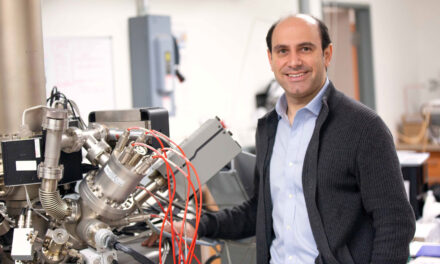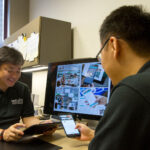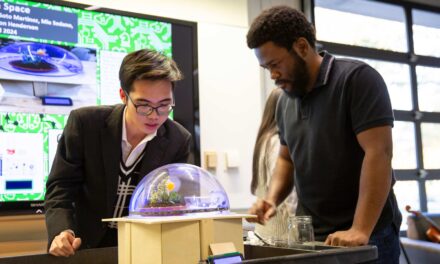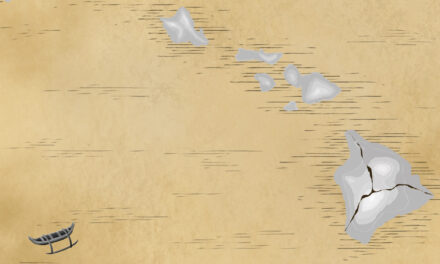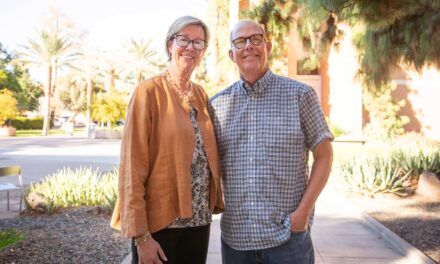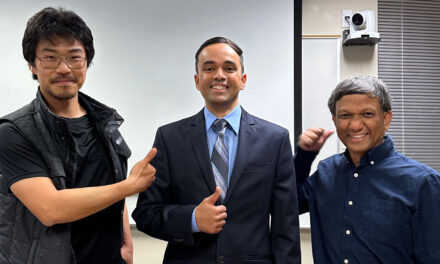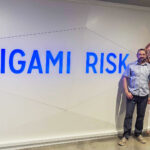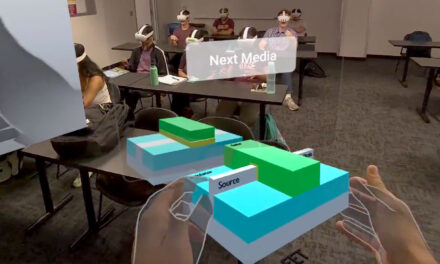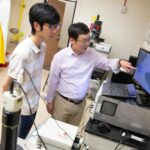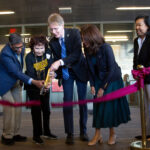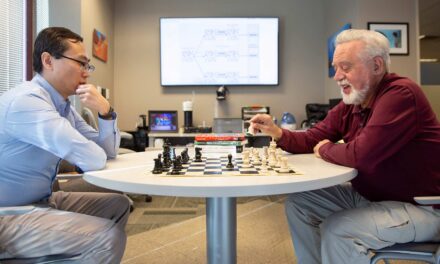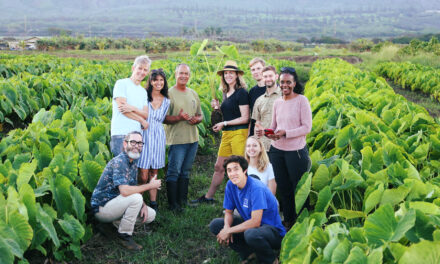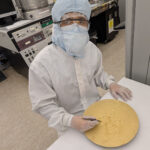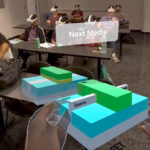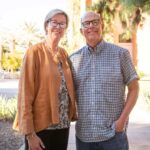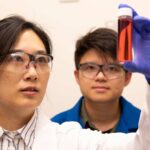
Next Level Devils take off on microgravity adventure with NASA’s Micro-g NExT program
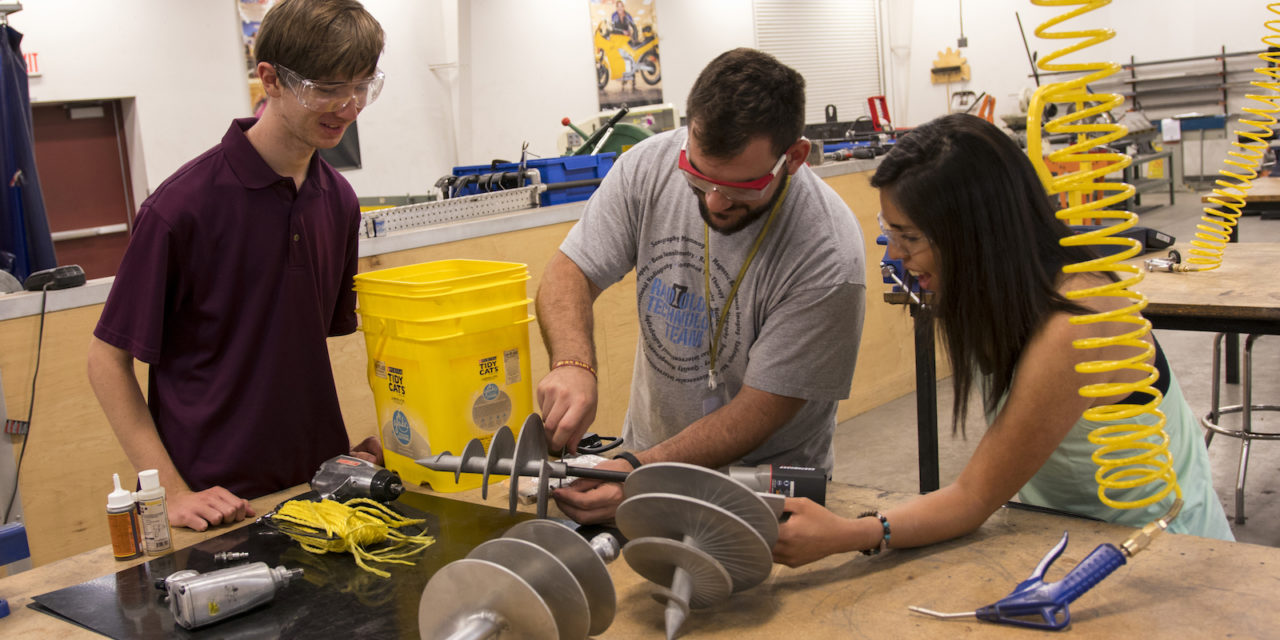
Above: The Next Level Devils prepare to test their conical tapered anchor prior to heading to NASA’s Neutral Buoyancy Laboratory near the Johnson Space Center in Houston, Texas. Photographer: Marco-Alexis Chaira/ASU
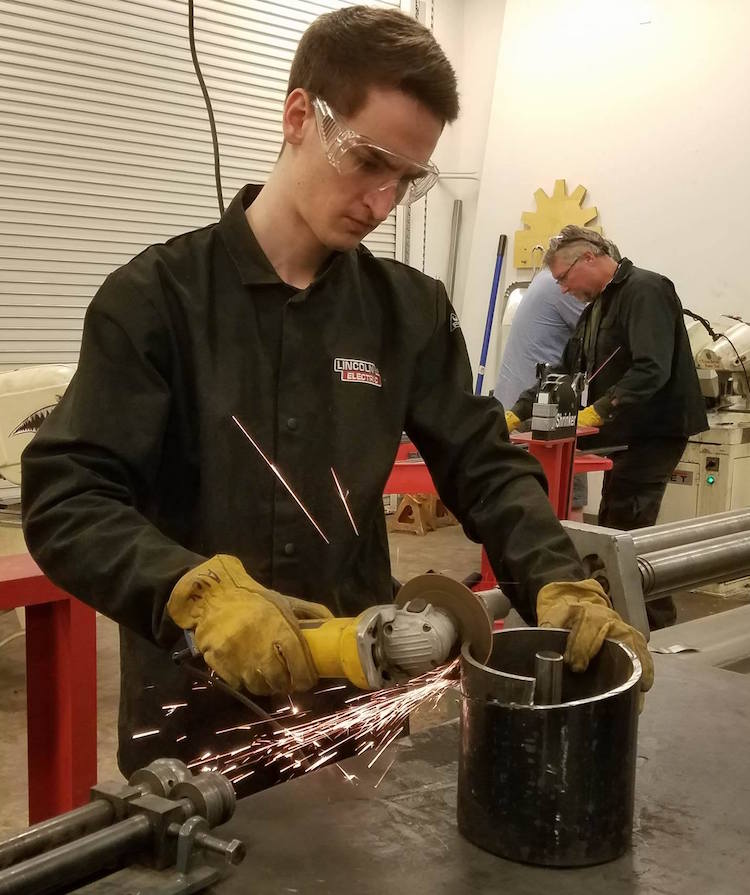
Evren Uner preparing the auger press to create the spirals for the auger. Photo courtesy of Next Level Devils
It’s long been Brittany Nez’s dream to work in the aerospace industry, and she’s not waiting until graduation to do so.
In fall 2015, the aerospace engineering senior founded the Arizona State University Next Level Devils to participate in NASA’s Micro-g Neutral Buoyancy Experiment Design Teams program, better known as Micro-g NExT. A year later, the team’s proposal has been accepted and they’re gearing up to take their design to NASA’s Neutral Buoyancy Laboratory near the Johnson Space Center in Houston, Texas, for testing this summer.
The Micro-g NExT program challenges undergraduate students to design, build and test a tool or device that addresses an authentic, current space exploration challenge. The testing of the designs is conducted by trained divers in the simulated microgravity environment of the NBL.
When the team of Ira A. Fulton Schools of Engineering students received the challenge in August 2016 they had three months to design and write the proposal. Their acceptance notice arrived in December 2016 and they have been manufacturing, testing and participating in outreach activities since then.
“A central goal of our project and opportunity to participate in the NASA program is community outreach,” says Patrick Hull, a mechanical engineering junior who is the team’s design lead. “We have been participating in on-campus events like Night of the Open Door as well as going to local high schools to teach STEM lesson plans related to aerospace topics.”
Next Level Devils begin
While interning with the NASA Space Grant Program, Nez learned of the competition and ASU’s lack of representation in the program. Nez contacted a few fellow students on campus who she thought would be interested. The team set out preparing right away with meetings and some inspiration from Jack Lightholder, a former lead of the ASU Dust Devils Microgravity Team that participated in a similar program a few years prior. Lightholder inspired the team to continue with the project and work toward submitting an application for the 2015–2016 academic year. Unfortunately, the team ran into a design flaw and due to time restraints, they were unable to submit the proposal.
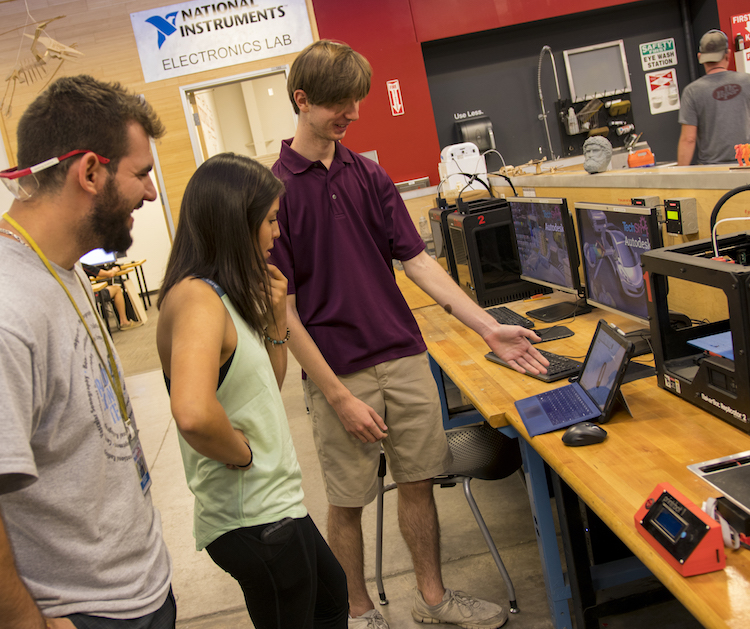
Patrick Hull (right) shows off his design of the drill exhaust escape and drill tether to Brittany Nez (center) and Christian Sclafani (left). Photographer: Marco-Alexis Chaira/ASU
“Much of what we learned was about the project guidelines, particularly about safety guidelines which apply to both the professional divers that will handle the projects in the neutral buoyancy tank at Houston this June and to potential astronauts in space,” says Hull. “We also learned to design our project with simplicity in mind after we later received feedback from NASA commenting that our design was complicated.”
“I think we were able to structure ourselves better for the second attempt,” says Nez. “We learned from our mistakes the first time and we had a better idea on how to create a structure for the team in terms of support, funding and the general engineering process of the project.”
The extra year also allowed the team more time in the design phase.
“To me, this is the most important part,” Nez says. “There are hundreds of different ways a team can tackle this problem and really narrowing in on a project that works best for the full team was a huge factor to our success.”
The 12-student Next Level Devils team is very diverse, and each member brings something different to the table, according to Nez.
Nez leads the group as team president. Aerospace engineering major Alek Cook is the team’s vice president and manufacturing lead and Hull is the team’s design lead, treasurer and secretary. The rest of the team is made up of aerospace engineering students Alessandro Laspina, Garrett Nez, Maria Samir, Christian Sclafani, Justine Tang, Evren Uner and Gashaw Bizana, who is both an aerospace and mechanical engineering student. Chemical engineering student Wakhile Shongwe and Robert Mann, a molecular biosciences and biotechnology student from the ASU School of Life Sciences round out the team. The team is mentored by mechanical and aerospace engineering
“We all have a different upbringing and different experiences that provides many perspectives to our challenge,” says Nez.
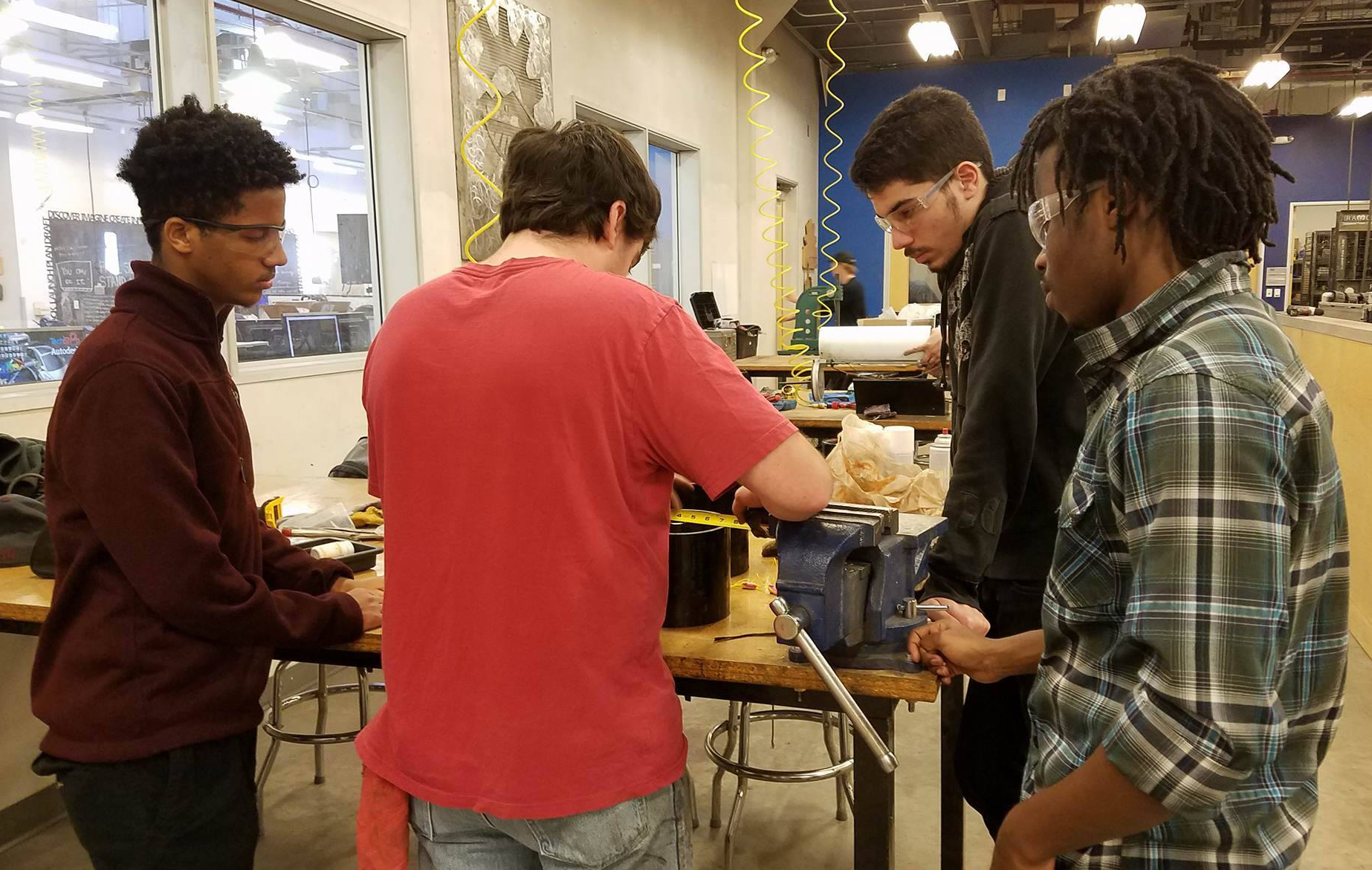
Gashaw Bizana (far left), Alek Cook (center left), Alessandro Laspina (center right) and Wakhile Shongwe (far right) working on manufacturing of the team’s prototype design of the auger. Photo courtesy of Next Level Devils
Gravity in space
When we think of objects in space we imagine them to be in zero-gravity. In actuality, they exist in a micro-gravity environment, meaning objects are outside the sphere of influence of a celestial body, but are still affected by pulls of gravity on a minuscule scale.
NASA has discovered that it is extremely difficult to anchor to an unconsolidated surface in microgravity. Due to the small amount of gravity in space, especially when the bodies are as small as asteroids, anchors are needed to keep equipment and people on the surface. To avoid objects from floating off into space, an anchoring device is needed.
This is where the Next Level Devils come in. The team is building an air-powered anchoring device that will attach to the sand-like surface of a planet or asteroid. They will be testing their prototype auger design, crafted by the team using the TechShop Chandler facilities. Additionally, Next Level Devils will be testing a pair of 3D–printed, aluminum drills provided to the team by Donald Godfrey and the additive manufacturing team at Honeywell Aerospace in Phoenix.
“Our design is a drill-like anchor that allows astronauts to secure or grip tools to the soil while under the low-gravity conditions of space,” says Hull. “This is significant because low-gravity makes it difficult to keep items on the surface of a planet or asteroid without floating away. When conducting research activities like taking soil samples, it is important that an astronaut’s tools are secure and do not float away.”
Innovation of the space industry
The space industry is at the forefront of innovation with much of the research that goes into the space industry being used to correct issues on Earth.
“The medical industry, construction industry, automobile industry, etc., have all used aerospace research to find better solutions to their own issues,” Nez says. “When we have to look at how a person will react a certain way in an alien environment, we gain so much more insight about the human condition as a whole.”
The goal for the Next Level Devils is to continue to build on their entrepreneurial and engineering skills that they will need in their future careers.
“There are plenty of skills that can be learned from working through a project from the designing and prototyping phase, all the way to the final project,” says Nez. “I hope that the younger members on the team will be able to work on building the engineering skills they need for future classes at ASU and the older students will be able to build skills that they will use when entering the industrial setting.”
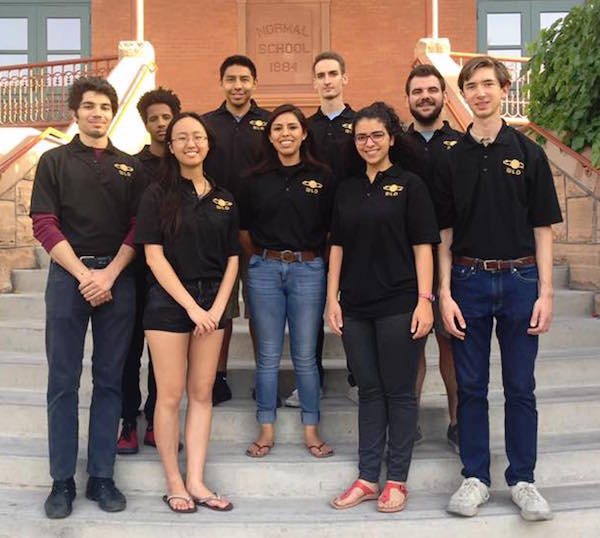
The Next Level Devils on the steps of Old Main on ASU’s Tempe campus. Back row, from left, Garrett Nez and Evren Uner. Middle row, from left, Gashaw Bizana, Brittany Nez and Christian Sclafani. Front row, from left, Alessandro Laspina, Justine Tang, Maria Samir and Patrick Hull. Not pictured Alek Cook, Robert Mann and Wakhile Shongwe. Photo courtesy of Next Level Devils
What comes next?
With the team headed to Houston to test out their design this summer, Nez isn’t afraid to look beyond Next Level Devils.
“I have gained many skills from this experience that will help me after I graduate,” says Nez. “I have built on my leadership, time management, public speaking and mentoring skills because of this project. The project has also given me more confidence in my choice of major. I know I am doing what I am passionate about and that gives me confidence knowing that I will be happy with what I am doing when I am done with my degree.”
Each member on the team has put in a large amount of work and time into this project and Nez hopes that they feel accomplished after completing the program and realize that they are doing something they enjoy.
“I hope they will be able to use the experience they gained while working on the team after they graduate and are working in industry,” says Nez. “For the younger members, I hope they have had a good experience working on a project of this caliber. I know they are hard-working and I hope they will step up and take on a leadership role next year.”



